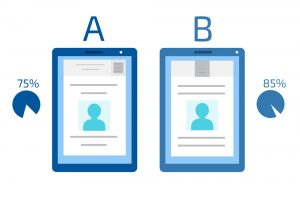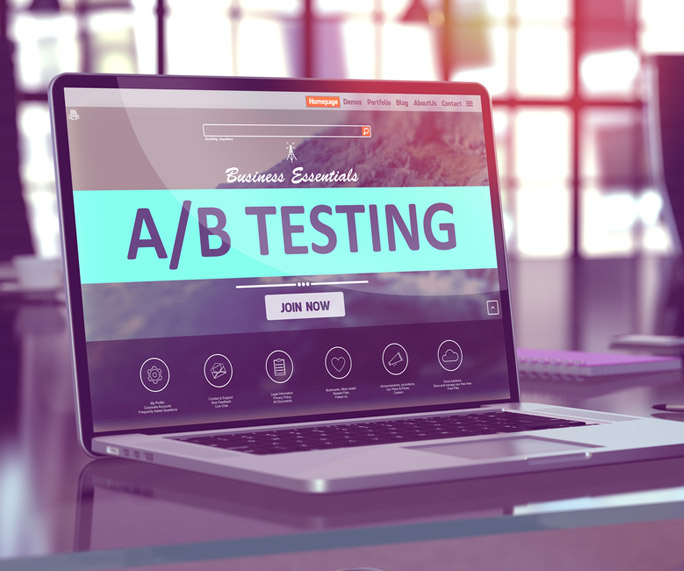In marketing, there are many subtle factors that affect our decision-making, often without us realizing it. Things like color psychology, and shapes can have a big impact on whether a reader converts or clicks away from your site.
Particular words and phrases can also elicit an emotional response that can affect buyer’s decision-making, and A/B testing helps you better understand how these small changes can affect a decision. As more marketing automation tools build in this functionality, it becomes easier to A/B test your email marketing.
Typically, an email marketing A/B test (also known as split testing) refers to sending two variations of an email to find out which one is more effective and receives higher engagement. It is typically done on a small sample size and, after determining which email is more effective, will determine which version gets sent to the remainder of the list.
Guidelines for A/B Testing Email Marketing
Before getting started, there are a few rules to keep in mind:
- Stick to one test at a time. Testing an email campaign and a webpage design at the same time can get tricky, and it can be hard to isolate where the results came from. Try to test one thing at a time (in this case, either the email campaign or the webpage design).
- Test one variable. Similar to the above, avoid testing two things in one email. For example, A/B test either the subject line or the CTA button, not both at the same time.
- Keep the timing the same. Sending both email variations at the same exact time eliminates any confusion around whether a response was caused by the variable being tested, or the timing of the email.
- Determine the significance of your results. Before conducting your test, decide what significant difference you are looking for to determine the winner. Typically this is measured through opens, clicks, or both.
What should I test?
Subject Line
One of the most common A/B tests in email marketing is the subject line. The variations can range from just tweaking one word to testing two subject lines that are completely different. Below are a few examples on what this could look like.
Personalization
Add personalization to a subject line by mentioning the reader’s first name or company name. Personalization has been proven to result in higher open rates, so it is one variation that is worth testing.
Version A: How SD-WAN can benefit your business
Version B: How SD-WAN can benefit [company name]
Need help with crafting a great email subject line? Check out this piece.
Testing two different topics
As long as the email content contains both topics you are testing, this can be a great way to find out what topics readers are more interested in.
Version A: SD-WAN 101
Version B: Internet of Things (IoT) 101
Promoting an offer
Readers may respond better to different offers presented and will help give insight into what readers value most.
Version A: Schedule your free consultation
Version B: Free PDF Download: SD-WAN and security
Sender Name
The sender name may seem like an insignificant detail, but it’s one of the first things people look at when an email comes to their inbox. Similar to the above, try using personalization:
Version A: Timmy@telecomcompany.com
Version B: info@telecomcompany.com
Depending on the email’s content, you can also try sending it from a customer service email, a specific department, or partner alias.
Email Content
Assuming your email gets opened, there are many options to test within the email itself. The metrics you want to focus on when testing email content are clicks and conversions.
Depending on what you want to test, it can be a small tweak or a completely different email. Here a few variables to test:
- Overall design
- Font size
- Images
- Colors
- Copy length
Results
After running your email marketing A/B test, there a few things to analyze:
- Open rate
- Click-through rate (CTR)
- Conversion rate
Using these metrics, determine which variation performed better and then send the winner to the remainder of your list. It can also be helpful to take note of what worked well in your tests so over time you can really hone in on what your readers respond best to.
If you aren’t sure whether your marketing automation tool has the capability to A/B test or if you want discuss your email marketing strategy, contact us today to chat!



